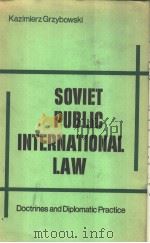《PUBLIC INTERNATIONAL LAW AND SHIPPING PRACTICES:THE EAST AFRICAN ASPIRATIONS》
| 作者 | 编者 |
|---|---|
| 出版 | NOMOS VERLAGSGESELLSCHAFT |
| 参考页数 | 396 |
| 出版时间 | 1984(求助前请核对) 目录预览 |
| ISBN号 | 3789010057 — 求助条款 |
| PDF编号 | 812874818(仅供预览,未存储实际文件) |
| 求助格式 | 扫描PDF(若分多册发行,每次仅能受理1册) |
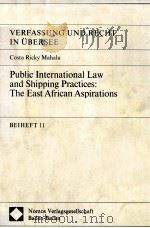
PART ONE: THE CONFLICT1
Chapter One: Shipping and International Low1
1.1.Introduction1
1.2.World Shipping and the New States7
1.3.LDCs Shipping Problems in International Low12
1.3.1.(a) The Right to Establish and Expand National Shipping Fleets12
(b) The Right to Reserve Cargo for National Bottoms16
(c) The Right to Receive Financial Aid16
1.3.2.The Genuine Link Question and Flags of Convenience17
1.3.3.The Question of Diplomatic Immunity of State Owned Vessels24
1.4.Africa and the International Shipping Scene28
1.4.1.Africa’s Shipping Problems29
1.4.2.Africa’s Shipping Questions in Selected International Organisations30
Chapter Two: The East African Sub-Region and Shipping Activities35
2.1Evidence of Shipping Practices35
2.1.1.Evidence of Shipping Practices35
(i) Pre-Colonial Era35
(ii) Colonial Era36
(iii) Post Independence Period38
2.1.2.Kenya, Tanzania, Uganda and Zambia43
2.1.3.The Indispensability of Shipping44
2.2.The East African States as Subjects of Maritime International Law47
2.2.1.Rights and Duties of Shipowning States in East Africa49
2.2.2.Rights and Duties of Kenya and Tanzania as Littoral States55
Chapter Three: The Shipping Experience59
3.1.East African States as Shippers59
3.1.1.The Doctrine of Sovereign Equality in Maritime Affairs59
3.1.2.The Inequality in Practice: The Question of Cargo Control62
(i) Who is a Shipper in East Africa62
(ii) The Role of the State in Shipping65
(iii)Who controls Shipping in East Africa65
(iv)The Terms of Shipment68
3.1.3.The Inequality in Practice: The Conference Line Practices70
(i) Freight Rates72
(ii) Rate Discrimination75
(iii) Consultation machinery76
3.1.East African States as Aspiring Shipowners78
3.2.1.Why Become Shipowners78
3.2.2.The Shipowning Experience82
3.2.3.The Eastern Africa National Shipping Line89
3.3.The Charges Made97
PART TWO: THE LAW112
Chapter Four: The Merchant Shipping Law112
4.1.The Law112
4.1.1.The Sources of Maritime International Law113
4.1.2.The International Law Aspect124
4.1.3.The Municipal Law Position149
4.2.The Subjects160
4.2.1.The Legal Regime in Relation to Subjects160
4.2.2.The Question of Land-Locked Countries170
4.3.The Objects179
4.3.1.The Legal Regime in Relation to Objects180
4.3.2.The East African Legal Regime and International Law185
Chapter Five: The Freedom of Navigation and Related Impediments188
5.1.Freedom of the High Seas188
5.1.1.Freedom of Navigation190
5.1.2.Impediments to the Freedom of Navigation195
5.2.Non-Legal Impediments - The Conference Liner Organisation205
5.2.1.The Conference Liner System and the Freedom of Navigation210
5.2.3.East African State Practice and the Freedom of Navigation219
5.2.4.Effects of Conference Practices to the East African States in International Law222
PART THREE: THE COMPROMISE237
Chapter Six: The Code of Conduct for Liner Conferences237
6.1.The Need for a Compromise237
6.1.1.Prelude to the Code of Conduct for Liner Conferences241
6.1.2.The UNCTAD Code263
6.1.3.The Convention on a Code of Conduct for Liner Conferences265
6.2.The Code as a Compromise281
6.2.1.The Code and International Law282
6.2.2.The Code’s Contribution in International Law284
Chapter Seven: The Code, Unilateral and Bilateral Measures287
7.1.Problems in Bringing the Code into Force287
7.1.1.UNCTAD V and the Convention297
7.1.2.The EEC and the Convention298
7.1.3.Binding Instrument or a mere Code?304
7.1.4.The Convention and Reservations307
7.1.5.Problems of Implementation309
7.1.6.The Code and the NIEO312
7.2.Unilateral Measures - Alternative to the Code?314
7.2.1.Unilateral Measures - The East African Practice317
7.2.2.Unilateral Measures: The Position in some West African States320
7.3.International Law for Economic Development in the Shipping Question325
7.3.1.Regionalism versus Universalism332
7.3.2.Proposed Solutions to East African Shipping Problems334
7.4.Conclusion343
Appendix A: Maritime Enactments in East Africa Affecting the Freedom of Navigation Principle351
1.Kenya351
(i) The Territorial Waters Act 1972351
(ii) Proclamation by the President of the Republic of Kenya of 28 February 1979352
2.Tanzania356
Appendix B: List of Conferences and Members in East Africa359
1.East Africa359
2.East Africa /Europe Conference360
3.Eost Africa /Middle East Rate Agreement361
4.East African Coastwise Conference361
5.East Africa /Far East Freight Conference362
6.East Africa /Australia Freight Conference363
Appendix C: Reaction to Conference Activities (Non-Member)365
Appendix D: The Code Ratification in Africa367
1.Littoral States367
2.Geographical Disadvantaged States367
3.Land-Locked States367
Bibliography369
1.Books and Articles369
2.Other Selected Bibliography388
3.Selected Documents389
a) United Nations389
b) United Nations Economic Commission for Africa389
c) United Nations Conference on Trade and Development390
d) UNCTAD - Shipping Division Documents391
e) Organisation of African Unit392
Abbreviations393
Summary395
1984《PUBLIC INTERNATIONAL LAW AND SHIPPING PRACTICES:THE EAST AFRICAN ASPIRATIONS》由于是年代较久的资料都绝版了,几乎不可能购买到实物。如果大家为了学习确实需要,可向博主求助其电子版PDF文件(由 1984 NOMOS VERLAGSGESELLSCHAFT 出版的版本) 。对合法合规的求助,我会当即受理并将下载地址发送给你。
高度相关资料
-
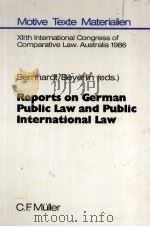
- REPORTS ON GERMAN PUBLIX LAW AND PUBLIC INTERNATIONAL LAW
- 1986 C.F.MULLER JUISTISCHER VERLAG
-
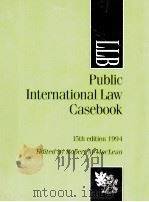
- Public international law caseboo
- 1994 HLT publications
-
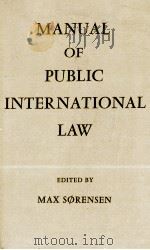
- MANUAL OF PUBLIC INTERNATIONAL LAW
- 1968 THE MACMILLAN PRESS LTD
-

- ENCYCLOPEDIA OF PUBLIC INTERNATIONAL LAW 10
- 1987 NORTH-HOLLAND
-

- THE ESSENTIALS OF INTERNATIONAL PUBLIC LAW AND ORGANIZATION
- 1929 THE MACMILLAN COMPANY
-
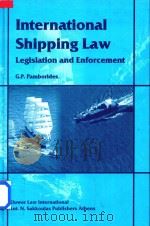
- International Shipping Law Legislation and Enforcement
- 1999 Ant.N.Sakkoulas Publishers Kluwer Law International
-

- CASES AND MATERIALS ON EAST AFRICAN MERCANTILE LAW
- 1972 SWEET & MAXWELL
-
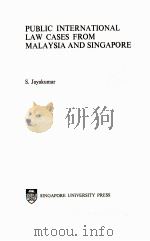
- PUBLIC INTERNATIONAL LAW CASES FROM MALAYSIA AND SINGAPORE
- 1974 SINGAPORE UNIVERSITY PRESS
-
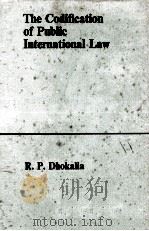
- THE CODIFICATION OF PUBLIC INTERNATIONAL LAW
- 1970 MANCHESTER UNIVERSITY PRESS
-
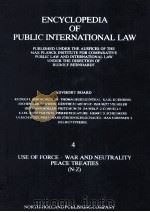
- ENCYCLOPEDIA OF PUBLIC INTERNATIONAL LAW 4
- 1982 NORTH-HOLLAND PUBLISHING COMPANY
-

- ENCYCLOPEDIA OF PUBLIC INTERNATIONAL LAW 3
- 1982 NORTH-HOLLAND PUBLISHING COMPANY
-
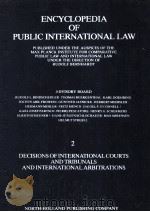
- ENCYCLOPEDIA OF PUBLIC INTERNATIONAL LAW 2
- 1981 NORTH-HOLLAND PUBLISHING COMPANY
-
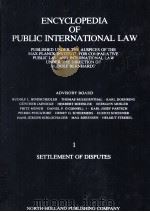
- ENCYCLOPEDIA OF PUBLIC INTERNATIONAL LAW 1
- 1981 NORTH-HOLLAND PUBLISHING COMPANY
提示:百度云已更名为百度网盘(百度盘),天翼云盘、微盘下载地址……暂未提供。➥ PDF文字可复制化或转WORD
